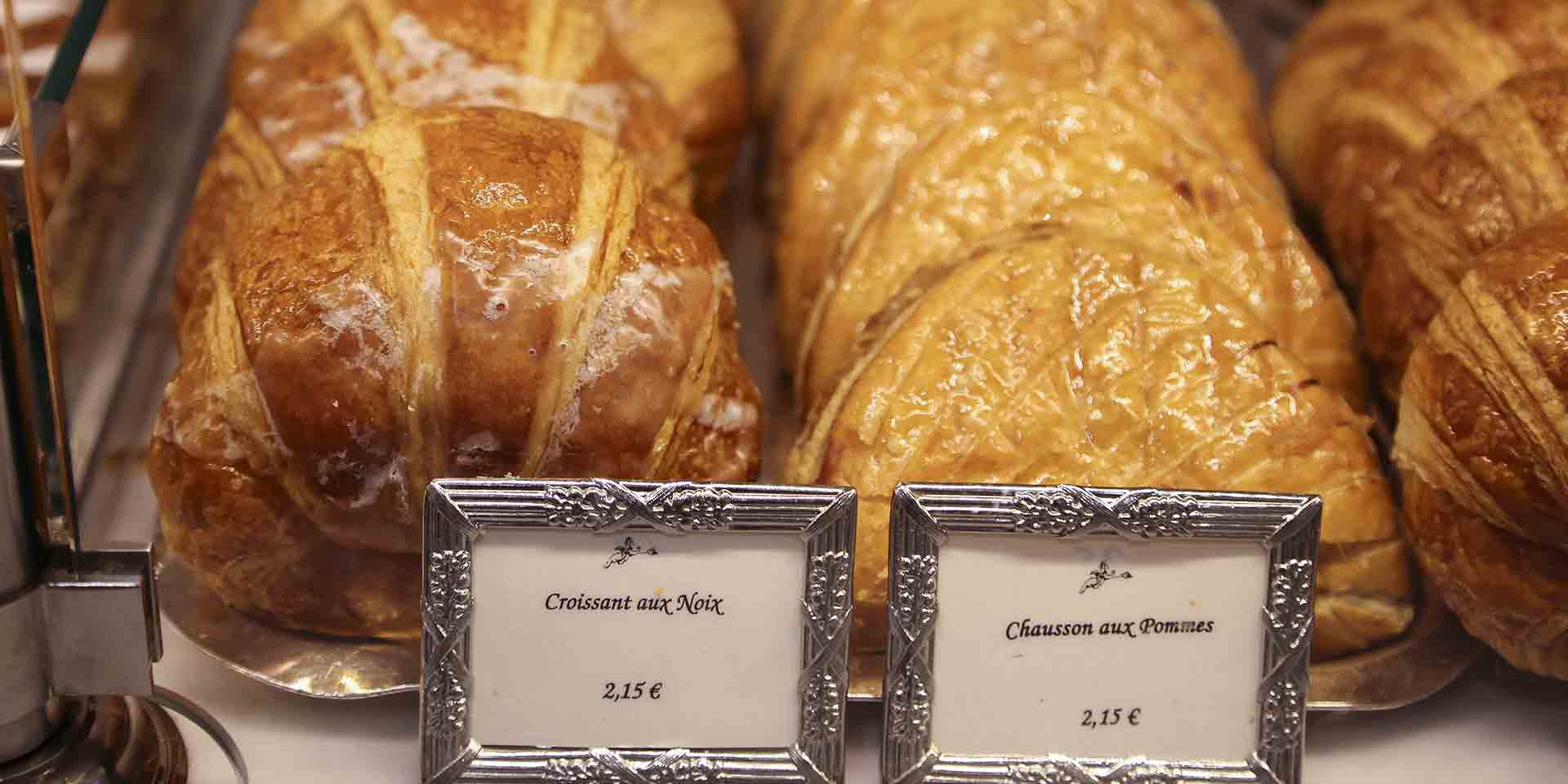A typical breakfast in Paris is simple, consisting of coffee, fresh-squeezed orange juice and a light and airy croissant. Enjoying one of the flaky, golden crescents made of butter, flour and sugar is one of the great joys of any trip to the City of Light.
That’s why it comes as a surprise when Christophe Vasseur, owner of beloved Parisian bakery Du Pain et Des Idées, says only 15 percent of croissants found in France today are homemade. The majority are industrially manufactured.
But this doesn’t mean you shouldn’t enjoy croissants when in Paris; you just need to know where to go. As always, check for travel restrictions or closures before planning your trip.
Croissant Basics
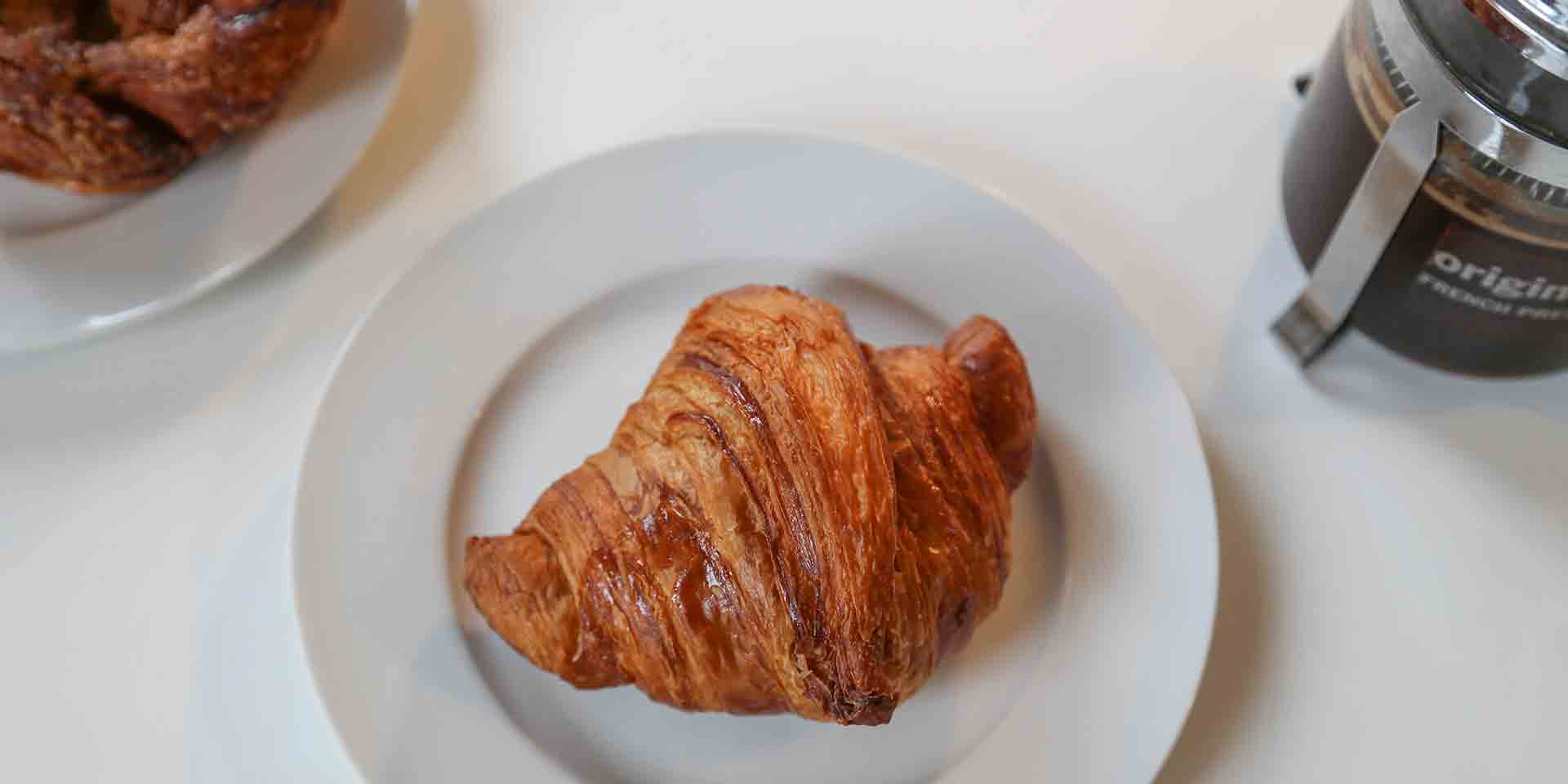
Croissants are thought to have originated in Vienna during the 1400s and grew so revered that there used to be a specific program of study for someone dedicated to making croissant dough, called a tourier.
“There’s a real paradox,” says Vasseur. “We have the entire world dreaming about the quality of our cuisine and traditional things like bread and croissants, but we don’t train anymore except at places like [Du Pain].”
That’s why, if you’re seeking out the finest Paris croissants, it’s important to support bakeries that are doing it right. Visitors can make a day of it on their own croissant crawl.
Start with the Gold Standard
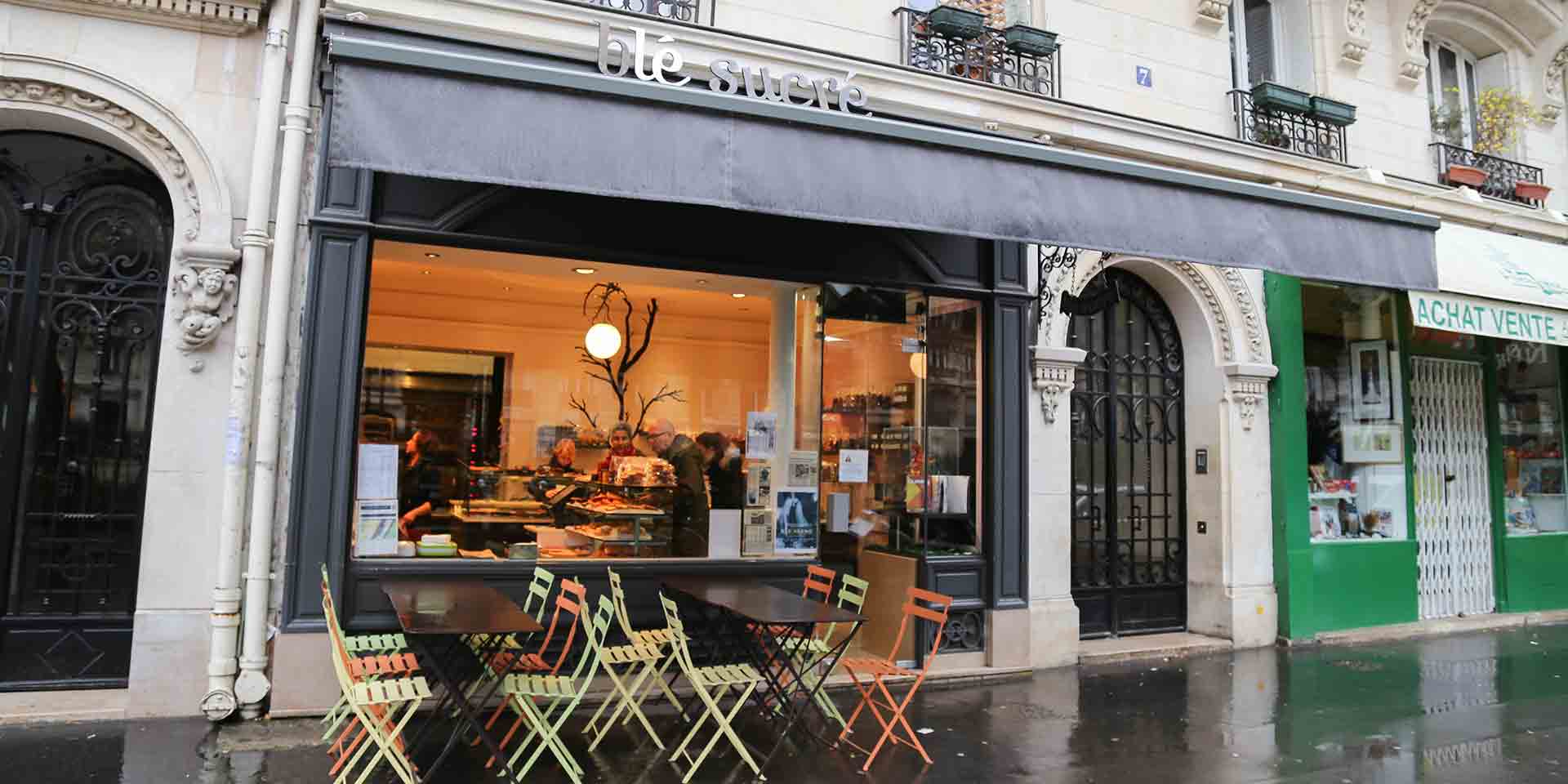
Purists should make a beeline for Blé Sucré, located across the street from a charming park in the 12th arrondissement. The dense croissants made by Fabrice Le Bourdat, the former pastry chef at Epicure, a three MICHELIN-Star restaurant, have a crisp outer layer and incredibly soft center that oozes apart as you pull.
These are the gold standard when it comes to croissants in Paris. But save your appetite, this is just the beginning.
Find Buttery Perfection
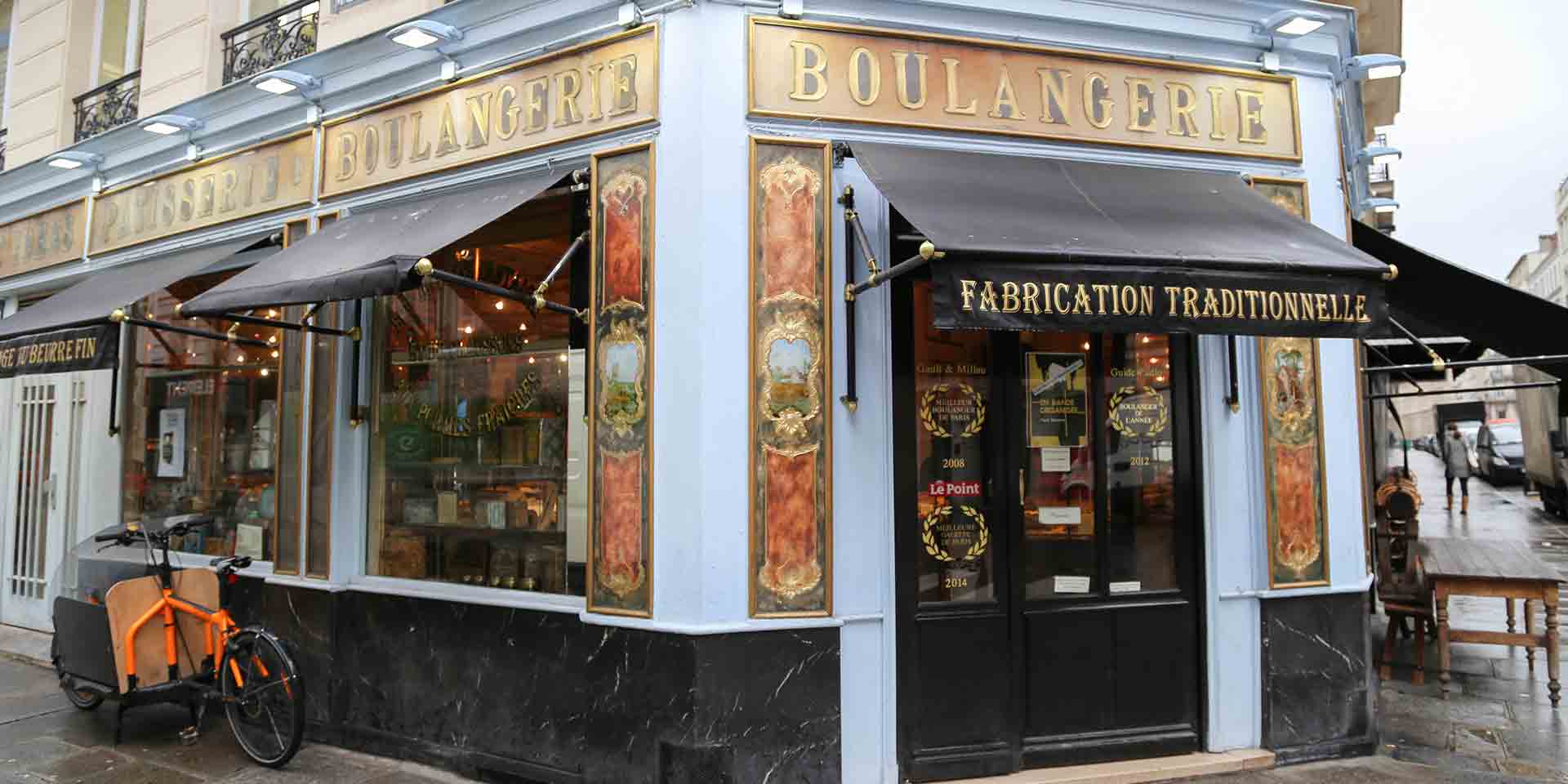
Your next stop is just around the corner at the gorgeous bakery Boulangerie Bo, where plump croissants share space in the pastry case with modern pastries like a strawberry rhubarb tart with yogurt and lime zest.
Boulangerie’s croissants are made using only high-quality AOC butter; AOC stands for appellation d’origine contrôlée and is a certification granted to certain French geographical areas for agricultural products.
The next stop is a metro ride away, so hop on line 8 and get off at République. It’s a short walk to Vasseur’s 10th arrondissement fixture, Du Pain et Des Idées. Here croissants are made the traditional and time-consuming way, over a period of 36 hours and using all organic ingredients.
Break with Tradition
While a plain croissant is simple perfection, creative croissants featuring newfangled flavors and ingredients are also worth sampling. Give yourself a little time to digest and make your way to the Left Bank and Pierre Hermé on Rue Bonaparte.
Hermé is one of the city’s most creative pâtissiers; he debuts new pastry flavors and concepts in much the same way that fashion houses launch new collections.
One item that stays on the menu every season is the Croissant Ispahan, filled with rose-flavored almond paste and a compote of lychees and raspberries. The tangy filling mixed with the buttery croissant is surprisingly sublime.
And for … Dessert?
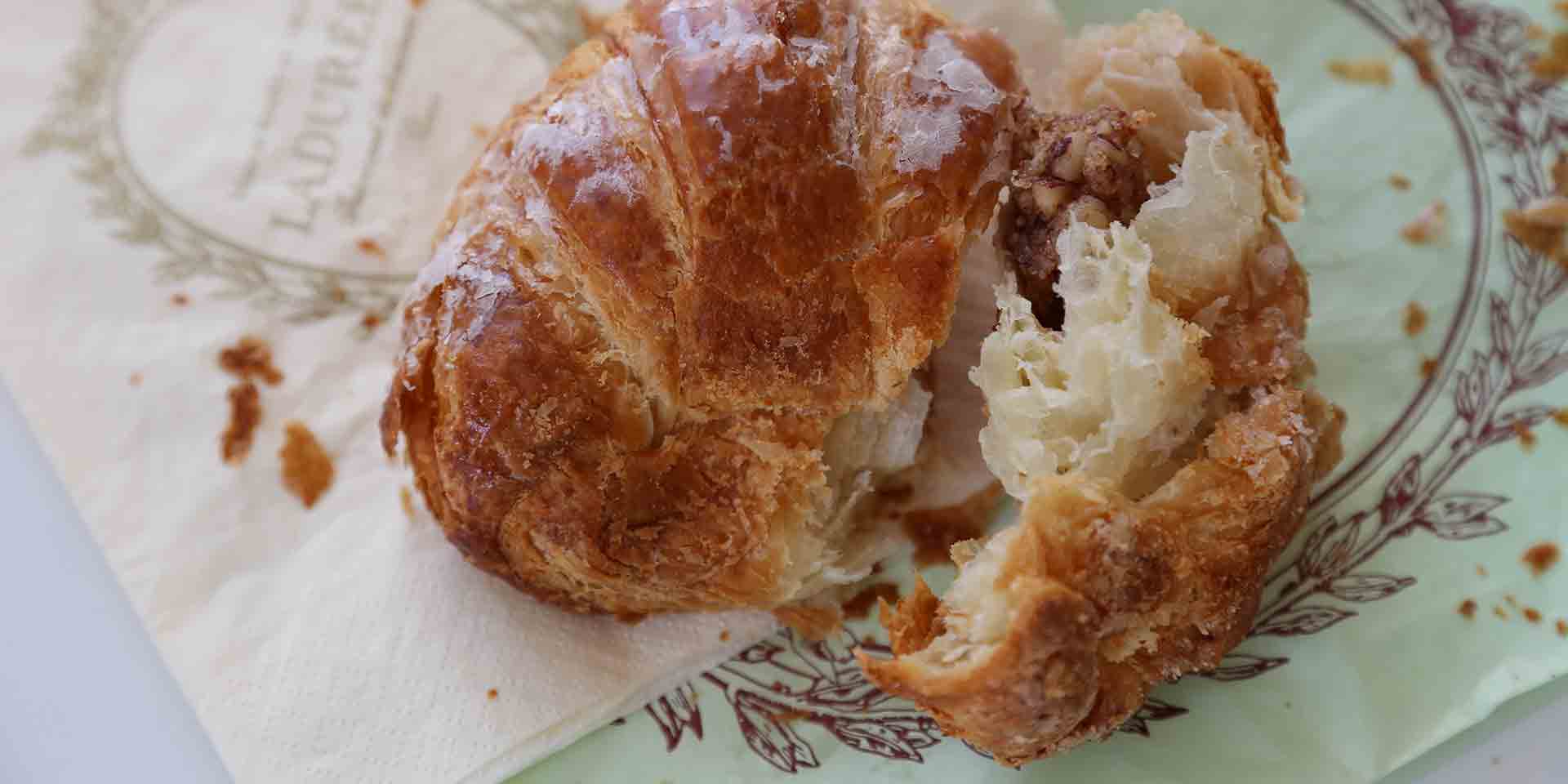
As a final treat, walk up the street to the pastel awnings of a French icon that now enjoys global recognition, Ladurée. Once inside, skip the candy-colored macarons the bakery is famous for and order the Croissant aux Noix, a fluffy croissant filled with almonds, hazelnuts, walnuts and brown sugar.
It’s a heavenly cross between a croissant and a cinnamon roll and the perfect punctation to a decadent day.
